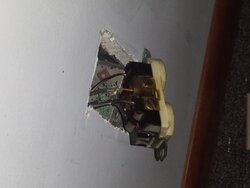TMonter
Minister of Fire
Here's some photos. They are not 5$ per outlet. You can buy them bulk at home depot. I find that the plug is less distorted than when I use a sidewire and tighten the hell out of the screws.
http://www.handymanhowto.com/electrical-outlets-side-wire-versus-back-wire/
I used the cooper equivalents through my house on the heavily used plugs and the standard plugs through the rest of the house and wrapped the wires around the screw posts. Cooper uses a similar screw clamping system on their commercial grade plugs.





